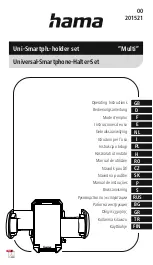
RECORDING MARCH 2006
12
For as long as E-MU Systems has been on the recording
musician’s radar—and that’s a long, long time, going back to
the Drumulator and Emulators in the early ’80s, and to large
modular synthesizers before that—I don’t think we’ve ever
seen a speaker with the E-MU logo. The PM5 is in keeping
with the company’s tradition of bringing us systems and
devices that enhance the studio experience without break-
ing the bank.
Front (and inside)
The PM5 is a discreetly dark-grey box with slightly round-
ed edges and corners, standing 11.5" tall, 6.9" wide, and 9.8"
deep. That’s a modest footprint and should allow positioning
in just about anybody’s setup no matter how space-restricted.
Aside from the greyish logo and the tiny lettering Precision
Monitor along the bottom, the only color accent is the power-
on light in blue that turns red to indicate overload.
Along most of the width at the bottom is the bass port;
above in the center of the fascia sits the 5" low-frequency
driver (a glass fiber cone for you tech heads), and near the
top is the 1" Neodymium soft-dome high-frequency driver.
The box weighs 14.3 lbs.
Each driver has its own power amp, each listed
as 40W RMS into 4 ohms, with a Signal-to-Noise
Ratio referred to full output of >98 dB and THD
of <0.2%. The crossover frequency is at 2.5 kHz,
the type is an active second-order Butterworth.
That’s all pretty standard stuff so far.
Back
There’s a heatsink protruding from the upper
part of the rear. Below it, all at the same height,
are the inputs and controls. On the left is the
Neutrik Combo XLR/TRS balanced analog
input socket, further in is a female unbalanced
RCA connector, and between the two there is a
toggle switch that turns out to be a mystery. The
manual says “Select either balanced (XLR or
TRS) or unbalanced (RCA) analog inputs with
this switch”. It doesn’t switch between the input
connectors: they’re both live at all times, any
signals received at both connectors at once will
be mixed, and the manual cautions against this.
What it
does
do is to alter the level of the signal
going into the power amp to an appropriate set-
ting for an unbalanced or balanced line.
Next on that line of items is the Input
Sensitivity Control Knob. It has a center detent
B Y L O R E N Z R Y C H N E R
REC mag 03-06 GL2 1/27/06 9:58 AM Page 12




















